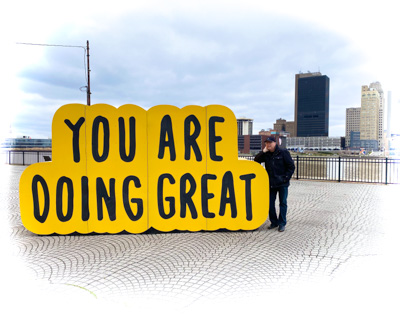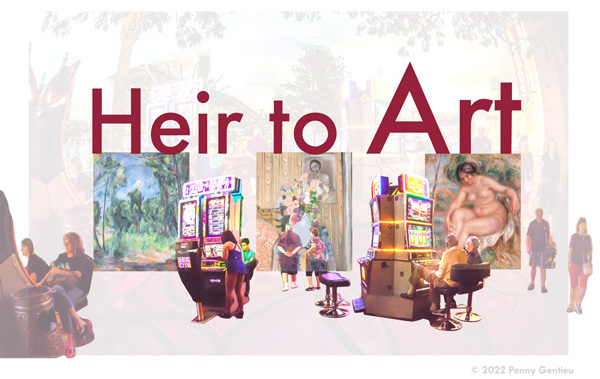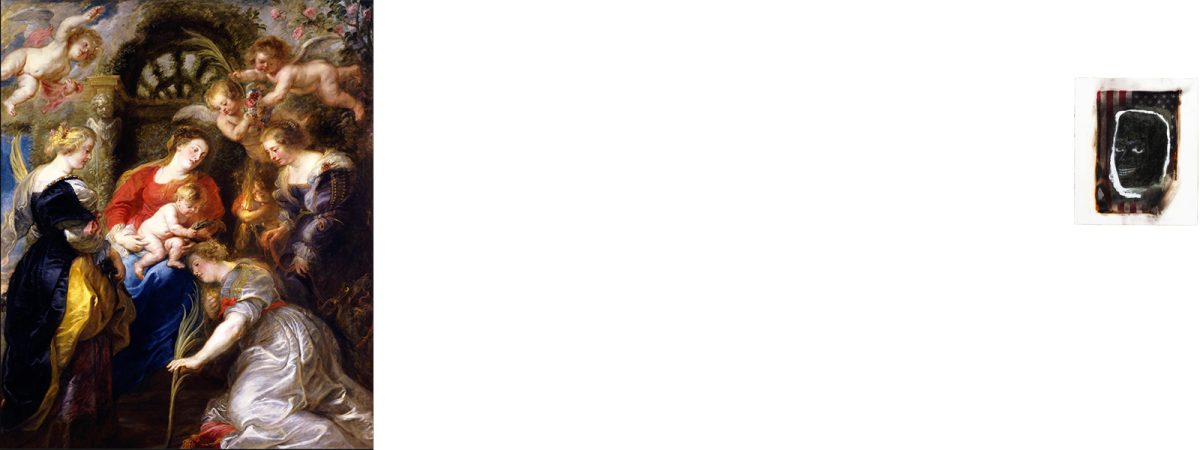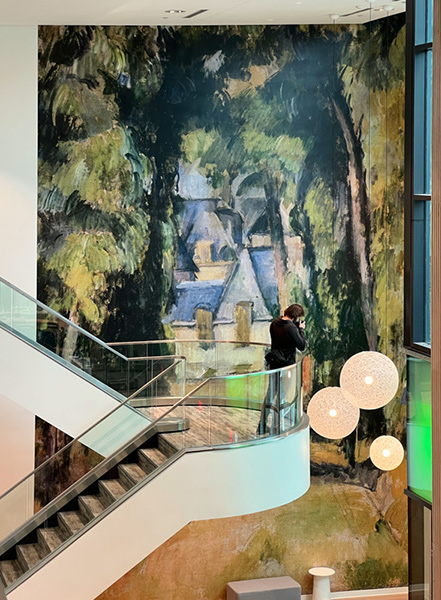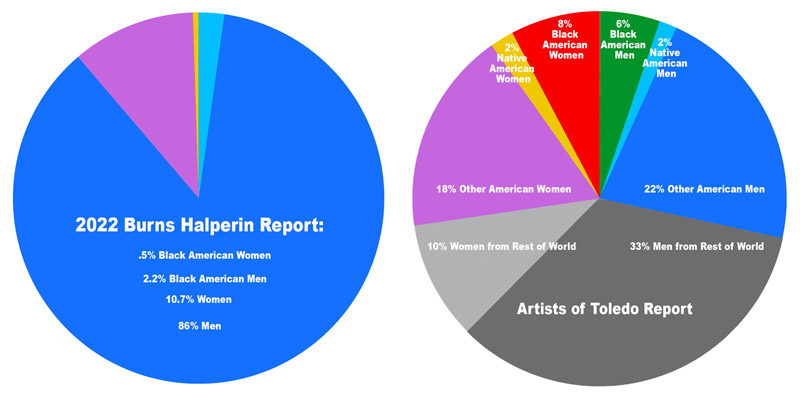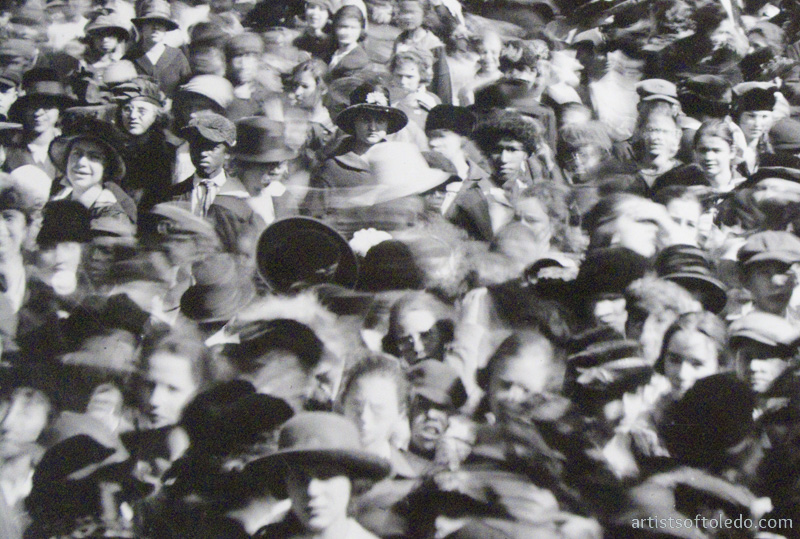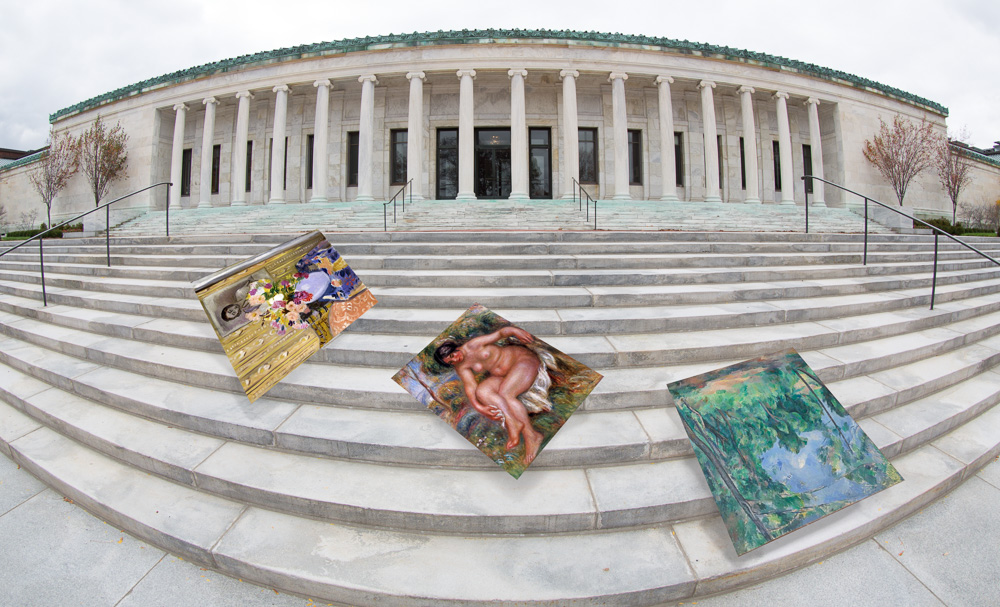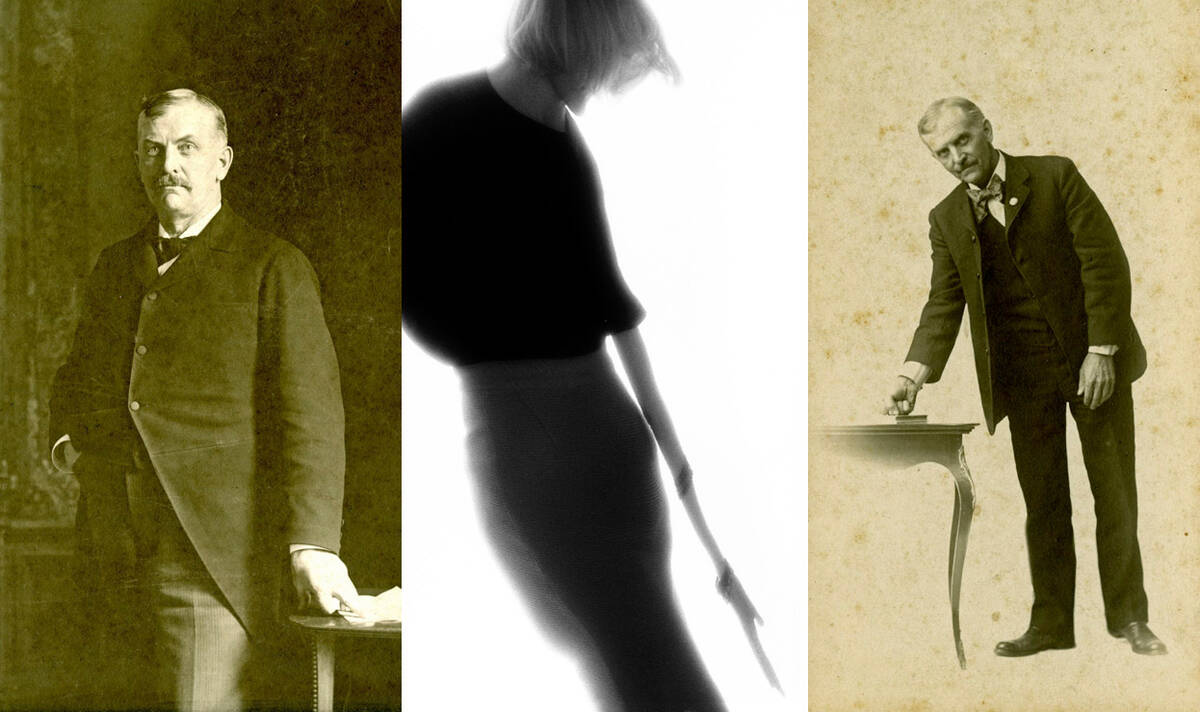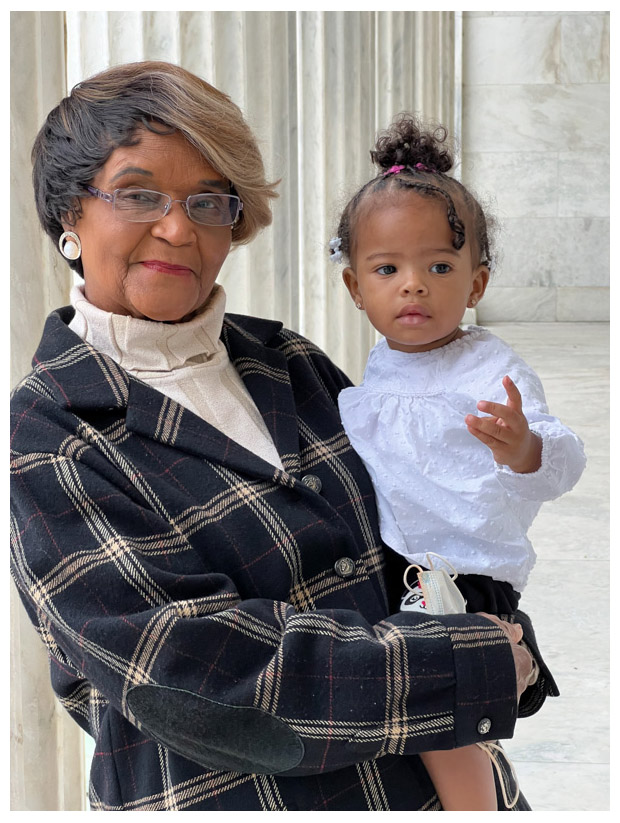A Toledo picture…. Yesterday and today
What is a Toledo picture, exactly?
The museum’s first curator of European art, William Hutton called a “Toledo picture” a painting worthy of the Toledo Museum of Art, a museum that owns what is said to be the very best Peter Paul Rubens in the country. A Toledo picture is something that would “hold its head up” alongside the Rothko, for example.
From Rubens to the burnt American flag
The Toledo Museum of Art used to be about art, but now it’s about community mobilization. They are building community centers outside the museum under the guise of bringing art to the low income housing projects. They don’t bring the residents to the museum because they say that the residents are put off by the museum’s opulence — they have to go to them. They have segregated our Toledo community into separate communities.
Meanwhile, they are rearranging the collection in our museum to what they think will better suit the people who live within the 2-mile radius who don’t come to the museum.
They sold a masterpiece right off the wall for $41.7 million dollars and put the money in a secret fund, not back into the Edward Drummond Libbey Endowment. We can only guess that it is perhaps because Edward is symbolic of colonization, or some rationale like that.
put yourself in their shoes
They remind us that the land underneath the spot where the museum stands once belonged to the native peoples of Northwest Ohio before the Libbey family claimed ownership of it. What’s more, Libbey came to Toledo from out east and used the sand of what was once the land of native peoples to build his industrial glass factory fortune. He made so much money that he funded the art museum. So therefore of course they would feel that they can do whatever they want with the museum. That makes total sense.
All of this looks good on a grant application – helping the poor – reclaiming native American rights – rejuvenating a tired old museum – a great cover while they ramshackle our great museum.
Canceling our membership and getting our money back
(oh yes we did)
My husband and I, former recent members of the Toledo Museum of Art, are not a part of the museum’s desired community, although we used to be welcome as members and visitors of the museum. We live outside the 2-mile radius, five miles away, inside the city of Toledo, but just too far away from the core.
We wrote multiple letters in the spring and summer addressing multiple issues that I have written about on this blog. Our important issues were never answered. So in September 2022 we wrote another detailed letter, this time to the membership department (not to be confused with the belonging department, because that department is exclusively for the desired communities they are rallying within the 2-mile activation radius of the museum.) We asked for our membership fee back.
Three weeks later, right before our membership was set to end, the museum sent us a check for the full amount of our membership fee. No apologies, no explanations, enclosed with a long-overdue Art Matters Magazine, and a note saying she hoped we like the new Art Matters, as if they managed to publish a new Art Matters especially for us. Must have been difficult for the new out-of-town employees to pull off. They haven’t managed to publish another Art Matters, and it’s March 2023. But soon they won’t have many members left at the museum who are like us, (they have everyone neatly categorized by zip code) and so they won’t need to publish an Art Matters at all. Just a prediction based on my experience.
Why are they so radical?
From what I can tell, it dates back to a Facebook post of the Toledo Black Artist Coalition (the group that picketed in front of the museum after Adam Levine came out with his infamous George Floyd memo stating that the museum should remain neutral in light of the national protests.) It was the fall of 2020 and Rhonda Sewell put a heart emoji on a post about racial reckoning rocketing through art museums (see below), and that museums have to change – a lot. Rhonda Sewell of the Toledo Lucas County Public Library, who once was a journalist at The Blade was not an art historian or a curator, or even a museum administrator, but five months later she inaugurated a new department at the museum, becoming the first director of a “Belonging and Community Engagement” Department.
November 18, 2020: Rhonda Sewell’s heart emoji on a Toledo Black Artist Coalition facebook post of a painting that is not in our museum, but the implication is that the Toledo Museum is elitist and racist.

The Department of Belonging and Community Engagement
Shit rapidly hit the fan — they closed the museum on a Friday in October to put on a private concert with John Legend that was supposedly for the kids in their outreach program but ended up being a private party for adults. Using the Great Gallery, where most of the Old Master paintings are displayed including the Peter Paul Rubens, they removed the paintings from the gallery walls, risking damage to the museum’s most valuable collection, and replaced them with contemporary paintings by Black artists. Information was initially released that it would be for the neighborhood kids they are doing outreach for. However, it was reported in the Sojourners Truth newspaper after the concert that only 40 children attended, who came from the seven different “communities” within the 2-mile radius of the museum. Along with 400 adults who had a party for themselves. Printing a full-page photo of their private concert in the 2021 annual report, the museum asserted that the museum would be doing more private functions like this in the future.
A Photo of the Great Gallery without Old Master paintings
Here is a photo I took of a great Toledoan, the first female Toledo city council member, in 1993, June Boyd with her great grandchildren posing in the middle of the Great Gallery on October 27, 2021. I just want to say here that I hope June Boyd’s book about the history of Black Toledo gets published soon, so that there will be an authentic voice of the history in which she plays such an important part.
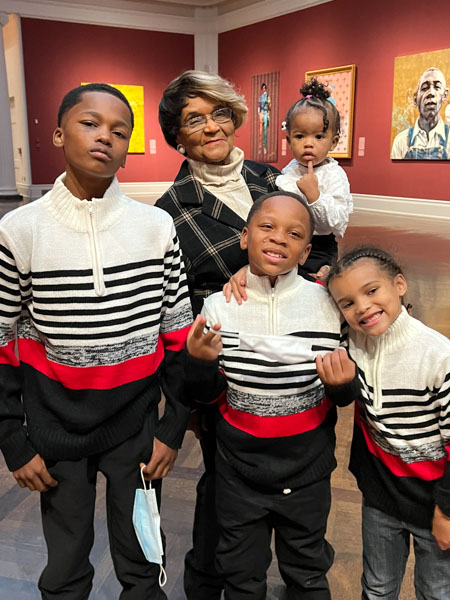
Happy 110th Birthday
It went gangbusters thereafter for Rhonda at the Toledo Museum of Art. The museum opened on a Monday in 2022, for the first time ever, which Toledoans enjoyed. It was Martin Luther King Jr. Day, which happened to fall on the same day as the 110th anniversary of the opening of the museum. But the museum didn’t publicize that little fact – I was there and not any of the employees I asked on that day knew that it was such a special day in the history of the museum. It was as if the new Toledo Museum of Art hated the old Toledo Museum of Art so much that they couldn’t even say Happy Birthday.
Then they sold three famous paintings for $59 million, for diversity-sake, then raised their parking fee by 45%, to make the museum more inclusive.
They announced the purchase of new art, with the burnt American flag painting featured in a photo slide show in the article on The Blade.
They announced that they were building art making stations in federally funded housing projects and equipping them with teachers. Bravo, museum, it’s so generous of them to do the Arts Commission’s job and Lucas County’s job and the City of Toledo’s job for them. This after the great educational program that they used to have for the general public for most of the 20th century has dissipated into hardly anything. It was a robust school that taught 2,500 public school children on Saturdays and college students along with adult community members during the week. It appears that they are siphoning what they used to offer to the entire community, to concentrate it outside the museum into federally funded housing projects and “communities” in just a 2-mile radius of the museum.
Meanwhile, our only remaining Cezanne that was promised to the Art Institute of Chicago’s major, international Cezanne show had been taken out of that show (while appearing full-page in the show’s catalog.)
They put on hardly any exhibitions, but they did mount two shows of artwork in need of restoration. The second of these shows was used as a fundraiser to raise money to restore art that the public could “adopt” for a short period of time with their name associated with it.
They featured a 1925 glass dress which to the Toledo community represents the Libbeys. The museum should have spent their own funds to restore it. Especially since they just received upwards of $500,000 from the Libbey Trusts for a Pandemic variance to use funds earmarked for buying artwork, for “direct care of artwork” such as for restoration, instead.
Freedom of Speech
The museum tried to get The Blade to retract my statements in my guest editorial, but I did not say anything that was not either factual or my opinion.
That’s how it rolls in the 419 area code of Toledo Ohio. And that’s how things like this can happen to the museum right under our nose.
I can write my blog on my website and I can post on my Facebook page. But on a Facebook group of 3,000 artists in Toledo, the Artists of 419, I haven’t been allowed to share my Artists of Toledo blog posts or make comments about things such as the recent launch of the Community Gallery. It took a guest editorial in The Blade to be allowed to make a post, but only of the editorial, all other attempts to share information were censored and blocked.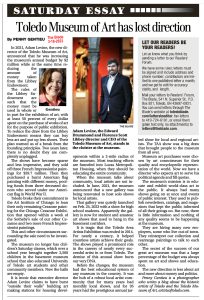
I’m just glad that I was invited by The Blade to submit a guest editorial, which was printed last Saturday, March 18, 2023 as a Saturday Essay.
It was June Boyd’s exercise of freedom of speech expressed in a Saturday Essay in The Blade that lead me to photograph her at the museum seventeen months ago. Her Saturday Essay was printed in The Blade on October 9, 2021, Let’s come together to save Toledo’s children, I wanted to meet her, so one day we got together at the Kent Library where I interviewed her and asked to photograph her.
I was researching Toledo’s mayor back in 1901, Samuel “Golden Rule” Jones at the time. Here’s the post I wrote: Whitlock, Jones and June Boyd. “Golden Rule” Jones’s house stood on the land on which the Toledo Museum of Art’s Peristyle now stands (I must also mention that his land was once held by native Americans before the colonization took place, but also it’s important to note that “Golden Rule” Jones gave away every dollar of his mayoral salary to the poor every month. Wish Adam Levine would.)
June suggested the museum as a good location for our shoot. We met there with her great grandkids, who were all decked out as if a stylist dressed them in matching sweaters that June got. (A photo would later be used on their Christmas greeting.)
It was the week following the John Legend concert, and the Great Gallery still had the contemporary paintings by Black artists hanging in it.
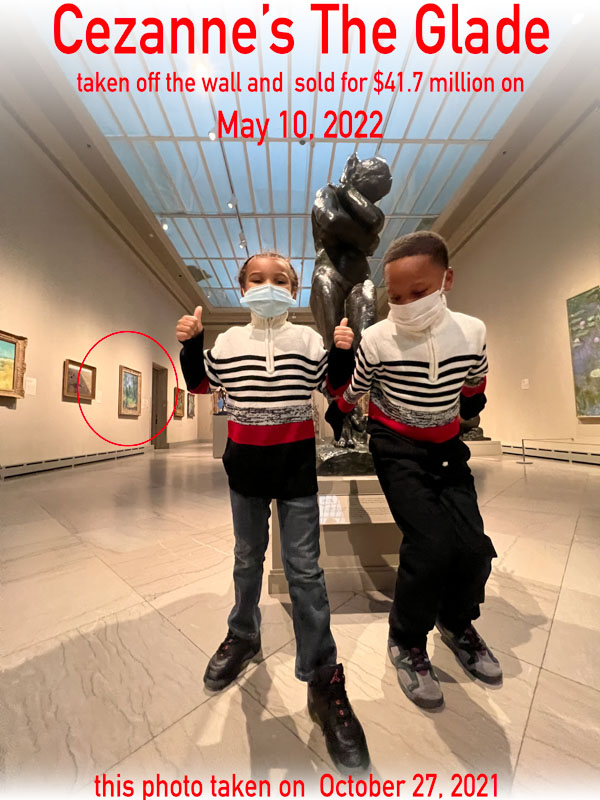
When I hear the lie that the Cezanne was in storage, such as I read in the comments to my editorial on the Artists of 419 Facebook page, this photo is the proof that that is false information. The painting was actually taken off the gallery wall and sold for $41.7 million. The museum has nothing to show for it today. It’s apparently in a secret fund, not back in the Edward Drummond Libbey Endowment from whence it came. The Endowment is open to public scrutiny, but according to what the director told members and the press, the proceeds from the auction are in a completely new fund, shielded from public scrutiny.
Money and Politics
Rhonda Sewell recently said, in regard to the museum’s new politically motivated DEAI plan (DIVERSITY, EQUITY, ACCESSIBILITY, AND INCLUSION), “What it’s saying is that now we are not only going to look at maybe one ethnicity or one race or one region for art history’s sake in our collection.” As if the Toledo Museum of Art had ever been racist, until now.
UPDATE: adding here from my October 6, 2024 post about the Brooklyn Artists Exhibition — “It is interesting to note that Rhonda Sewell, who was initially hired in 2021 for the new post of “Belonging and Community Engagement Director” transitioned to another new bureaucratic museum post, that of “Director of Advocacy and External Affairs” in June 2023. This role is described as “forming and maintaining key relationships with legislators and policy makers at the local, state and federal levels.” Fascinating, since it was only a month before that the Ohio Attorney General embarked on an investigation of the Toledo Museum of Art regarding the circumstances surrounding the sale of three famous Impressionist paintings for $62 million in 2022 and the apparent breach of fiduciary duty by the trustees of the Edward Drummond Libbey and Florence Scott Libbey endowments – the Libbeys being the museum founders.”
Along with collecting millions of dollars in taxpayer grants, that’s apparently how they handled my April 2023 complaint to the Ohio Attorney General. Obviously it worked. So I made another —
URGENT FOLLOW-UP: RECKLESS DISPOSITION OF TMA’S CORE ART COLLECTION
